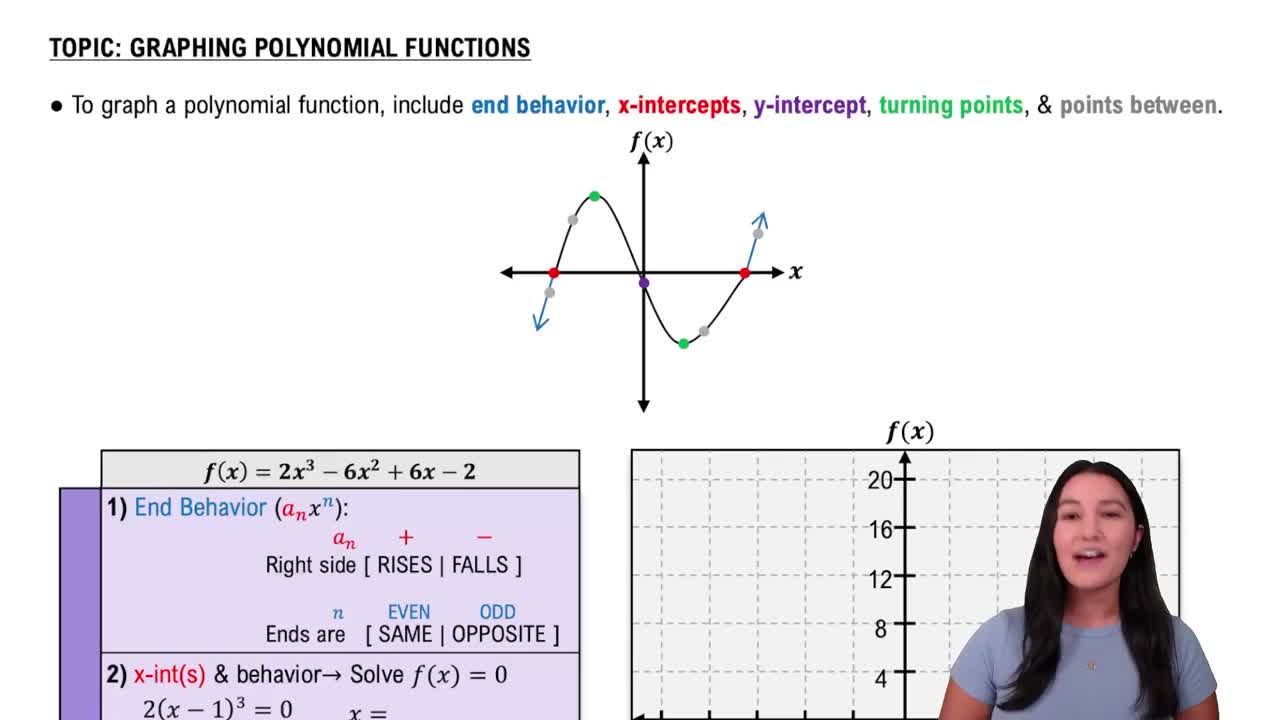Here are the essential concepts you must grasp in order to answer the question correctly.
Polynomial Functions
A polynomial function is a mathematical expression involving a sum of powers in one or more variables multiplied by coefficients. The general form is f(x) = a_n*x^n + a_(n-1)*x^(n-1) + ... + a_1*x + a_0, where n is a non-negative integer. Understanding the degree and leading coefficient of a polynomial helps predict its end behavior and the number of roots.
Recommended video:
Introduction to Polynomial Functions
Factoring Polynomials
Factoring polynomials involves expressing a polynomial as a product of its simpler polynomial factors. For the function f(x) = (x-2)^2(x-5), it is factored into two distinct roots: x = 2 (with multiplicity 2) and x = 5. This process is crucial for identifying the x-intercepts of the graph, which are points where the function crosses the x-axis.
Recommended video:
Introduction to Factoring Polynomials
Graphing Polynomial Functions
Graphing polynomial functions requires understanding their key features, such as intercepts, turning points, and end behavior. The graph of f(x) = (x-2)^2(x-5) will touch the x-axis at x = 2 and cross it at x = 5. The shape of the graph is influenced by the degree of the polynomial and the nature of its roots, which helps in visualizing the function's behavior.
Recommended video:
Graphing Polynomial Functions
 Verified step by step guidance
Verified step by step guidance Verified video answer for a similar problem:
Verified video answer for a similar problem:



 6:04m
6:04m